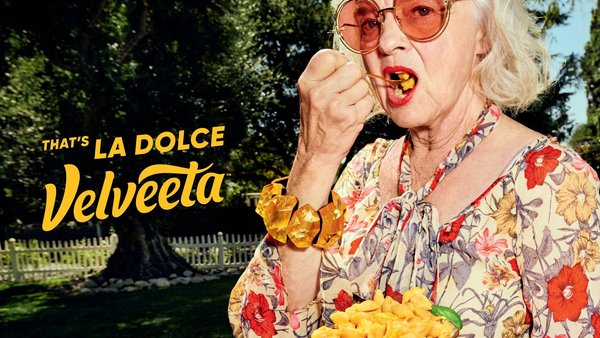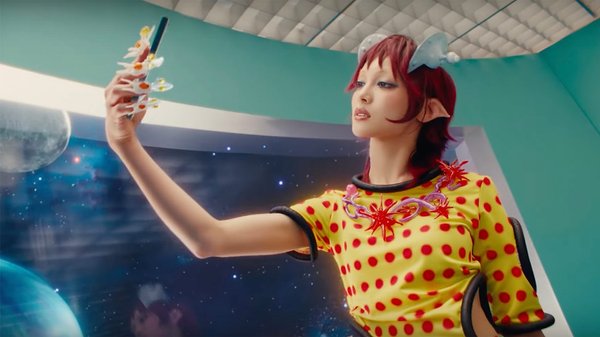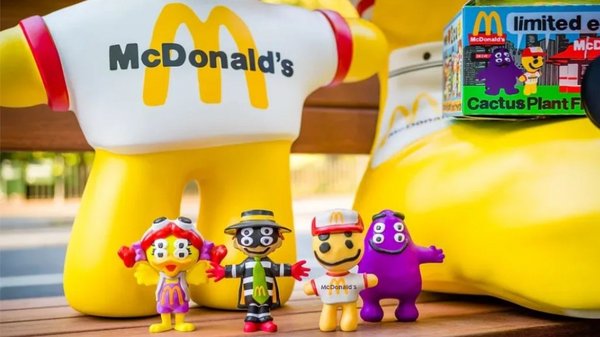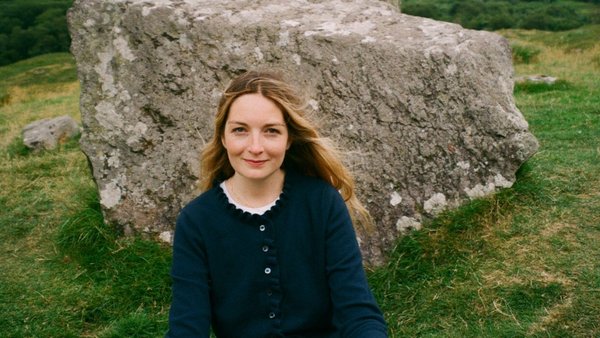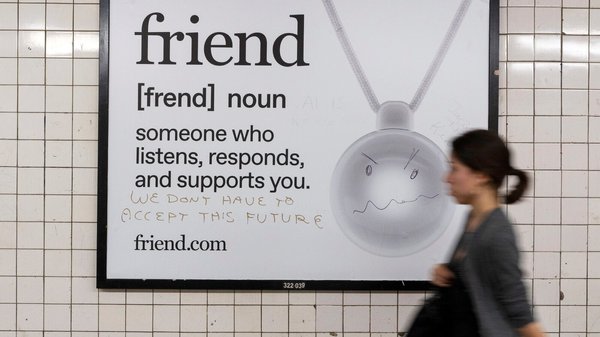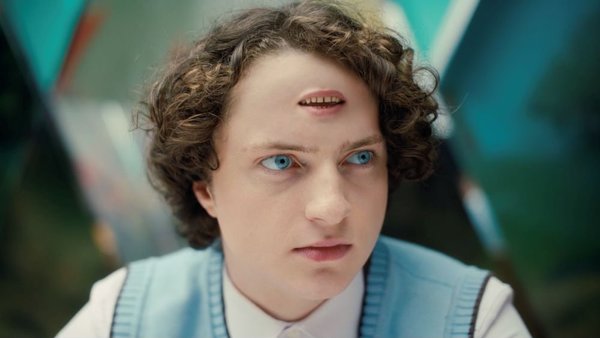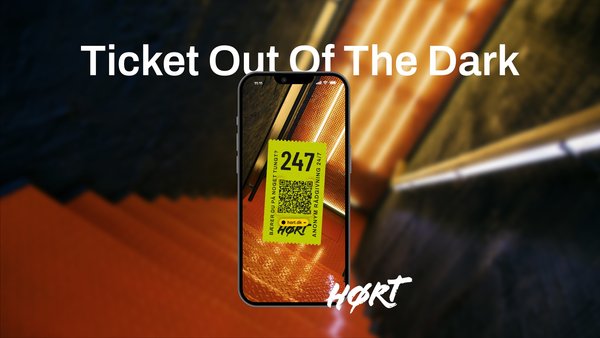Around 25 years since JD Sports first introduced its famous drawstring bag, the brand has launched a Christmas campaign that emphasises the bag’s status as a symbol of youth culture.
The Forever Forwards campaign was produced by Uncommon Creative Studio, London, and centres around a 90-second hero film titled The Bag for Life. Set to the nostalgic 90s soundtrack of ‘Sweet Harmony’ by Liquid, the spot runs through scenes that show the many roles the JD bag plays in young people’s lives as they interact with friends and family over Christmas. Not only is the bag pictured to be a statement of fashion worthy of making its way into a nightclub, but it’s shown to be a school bag, a shelter from the rain at football cages, and a way for British rapper Kano to transport leftovers home after a festive family meal.
Sticking to JD’s strategy of partnering with a broad range of influencers from the youth culture scene, the film also features England footballer Ella Toone, R&B/soul singer Joy Crookes and YouTuber Chunkz, among many others.
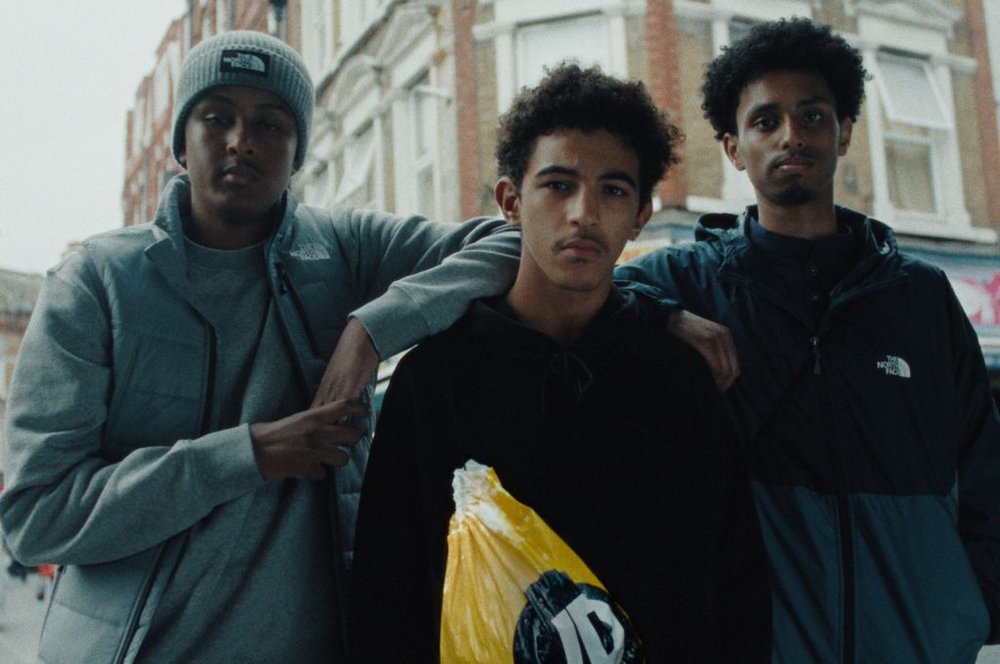
Prior to the launch of the film itself, JD teased the campaign with a series of OOH ads. What first appeared just to be images of a person carrying a JD bag on their back, were soon flipped with the launch of the hero film to reveal the identities of several of the celebrities who featured in the ad.
The film launched on TV and social media in November 2023, alongside the OOH campaign.
To find out more about the insight behind the campaign, Contagious spoke with Uncommon head of planning Tobey Duncan, and planning director Rosie Cross. They said that:
- JD’s core youth audience are hard to reach, being turned off by brands that advertise to them in a traditional sense. JD recognised they had to create something authentic that could reach them through marketing that they would share
- The brand has built a reputation of creating Christmas ads that are counter-cultural, focusing on youth culture at a time when others opt for clichéd takes on the festive season
- Most reporting on youth culture is negative, because JD is so strongly associated with this group, the brand wanted to show a truer portrayal of young people
Rosie Cross, Uncommon Creative Studio
Tell us about the agency relationship with JD Sports.
Tobey Duncan: JD approached us because they’ve recognised that they’ve turned Christmas into a big marketing event for themselves, and their recipe for success is turning up with a different, countercultural energy, at a time when everyone’s got talking characters. They were looking for another partner to author that. We found out that while they had an urgent need for a Christmas ad, what they really needed, and were after, was a brand platform. And so through that process we arrived at the brand platform and we needed to get into production. It developed pretty quickly onto the Christmas stuff.
It seems as though the target audience for JD is predominantly young people. What are the challenges of advertising to this audience?
Rosie Cross: That’s definitely their core audience, and they have a broader audience as well. But mostly the focus is that late teen age. I think the biggest truism that we were really aware of is that this age group aren’t that into advertising in a traditional sense. They have this real need for authenticity. They’re a bit more turned off by brands talking brand advertising at them. Although we were aware that sometimes it can be difficult to reach this audience, we also knew that if we came up with something that travels then we would reach them through them sharing, and through striking a chord with them. We wanted to make sure that we weren’t speaking to this audience in a clichéd way, or representing them in a clichéd way.
Duncan: When we were learning about this business, we had the same question, which was, ‘who’s your target?’ Being a bit younger, parents are sometimes involved in some of that decision-making. I think JD sports is genuinely one of those organisations that’s just obsessed with its consumer – and that’s the kind of youth consumer that we’re talking about. They’re very aware that parents buy from JD, but their marketing organisation is all focused on that user consumer. Through those young people who we spoke to as part of this process, it was really clear that JD already holds that place in their hearts.
What are the biggest challenges that JD faces right now?
Cross: JD didn't come to us with one specific business challenge per se. They're an incredibly impressive business, established as market leader in the UK, and expanding globally at a rapid pace. So one challenge that was front of mind was how to establish a consistent brand as the business expands into new markets.
JD’s biggest challenge when it comes to their Christmas campaign is how to cut through in a way that will appeal to their youth audience. Christmas is obviously a really crowded time for media, with every brand clamouring for attention. But also the general tone can be quite schmaltzy. If you’re playing in the space of tradition and gifting and Christmas jingles, it can be really difficult to stand out or strike a chord. So our main challenge was finding a vibe that actually resonates with our audience at this time of year.
We really wanted to present a sympathetic representation of what being young is today, so that JD’s audience would feel seen in a way that they’re not usually represented
Rosie Cross, Uncommon Creative Studio
Did you receive a brief for this campaign?
Duncan: The brief was centred around Christmas. But it was a pitch process. In that process we worked out with JD Sports that actually the first question we need to answer is ‘What does this brand stand for?’ I think they realised they were asking a lot of marketing questions in silos, like what should we just do at Christmas? Actually, we needed to get to the core of what the brand was about and recognise the role they play in culture.
When you see representations of youth culture or conversations around youth culture, they’re quite negative. We recognise with JD that they actually supply the most visible part of youth culture, which is the clothing. At the heart of this brand isn’t just a retailer, it’s someone really invested in expanding youth culture. We see that geographically, from stores starting in the north of England to now being all across Europe and the US. We see it in the kind of stuff they’re supporting, whether it’s their charitable initiatives, and we see it in the people, in the subcultures that they are playing in.
We said, before we can talk about Christmas, we need to talk about JD Sports, and that’s how we arrived on the idea of ‘Forever Forwards’. With that as kind of a long-term brand idea that is now being embraced by the organisation globally, we applied that thinking to this first campaign launching at Christmas
What was the key insight behind the campaign?
Cross: It was the idea that for JD’s audience at this time of growth and discovery in their lives, where they are growing up, they’re learning new things and working out what direction they should be travelling in, they’re hearing at the same time so much pressure to dress differently, to behave differently. This is real pressure for them to recede at a time that should be a moment of growth.
The campaign decided to bring that tension to life. We really wanted to present a sympathetic representation of what being young is today, so that JD’s audience would feel seen in a way that they’re not usually represented. The broader blast radius of that is that we wanted people at large to reappraise their perceptions of youth culture. Ultimately, that is how we want to start to demonstrate how JD is committed to propelling youth culture forward.
Rosie Cross, Uncommon Creative Studio
Twenty-five years on since the JD bag first launched, how much of this campaign was about refreshing the bag as a distinctive asset for JD?
Cross: The bag is a really, really core part of this campaign. We’re aiming to make the bag famous and that’s rooted in all of the insights about how integral this bag is to culture. There was definitely an insight in the campaign around the bag, which is that it’s just so much more than a carrier bag to the audience. It becomes basically their bag for their lives – it really is evidence of the role that JD plays in youth culture.
But it’s quite different from a distinctive brand asset. We weren’t looking to use it in the same way that we would try to make a jingle famous or a brand colour famous. The reason why we included the JD bag is because it evidences the right that JD has to help propel this culture forward. Because the bag plays such an integral role in young people’s lives, we wanted to pay homage to that. It couldn’t be the idea in and of itself, especially as there’s different levels of maturity that JD has in different markets.
Duncan: It’s kind of funny because, in some ways, we’ve ended up with almost a master class of a distinctive brand asset, and it’s very recognisable. No one can copy it. But we didn’t go in search of that. We have a point of view that youth culture should expand, it shouldn’t recede, it should go to new places, but we wanted a symbol, an icon for that. And we actually found it right under our noses, which is this bag that, yes, you get your sneakers in, but then two bags turn a field into a football pitch. People carry their records around in it. All the cast and the artists we were working with had their very authentic memories of it that we wanted to bring to it. For us it was this perfect metaphor for how youth culture was travelling around. It just so happened to be integral with the brand.
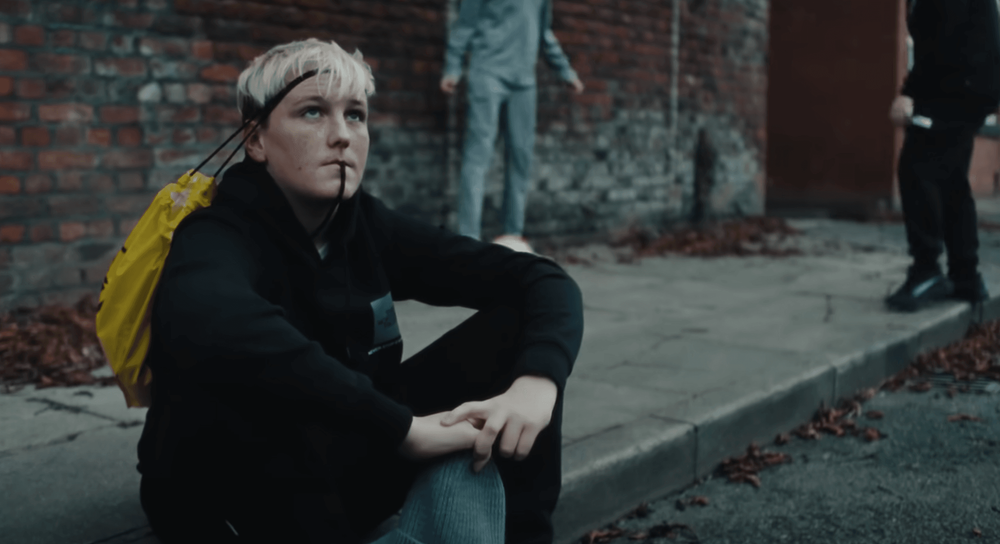
Did you conduct any research to help inform the direction of the campaign?
Cross: To get a really broad overview of how JD was perceived in different markets, we worked very closely with the clients who gave us a lot of global data and helped us to understand the different markets and their different levels of maturity. But I think what’s really important when you’re trying to create a really accurate representation of an audience group is qualitative research.
It was important for us to speak to real people in the audience and to speak to some influencers and culture creators in that space to get a sense of who they are, what they’re frustrated by in society, and the role that JD plays within their lives. The research was a really core part of it, but I think what’s even more important is that this wasn’t just a domain of strategy. It wasn’t a process where strategy did the research and owned the insights. Throughout the creative development process we ensured that people were very close to the consumer, and all through production as well. We made sure that the need for us to be accurate in our representation of these people went all the way through onto set, through street casting and through the wardrobe choices that were made.
What does the Forever Forward tagline mean to JD? Why is it important and relevant now?
Duncan: I think, particularly JD’s specific sub brand of youth culture, we just see it in so many aspects of the world right now. It’s in football, it’s in music, it is in art. We just think it’s a wholly positive, wholly additive thing. Forever Forward is that view of youth culture. It also just really resonated with the way JD has a hell of a lot of velocity and momentum behind its business. I think they’ve also just been embracing it as a mantra because, honestly, I’ve never seen a business act with as much velocity. They’ve been opening stores at pace in France, and Italy and expanding out to the US, they have a content team of a couple of hundred who are forever producing stuff.
Why is the brand well suited to showing a less clichéd take on Christmas?
Cross: I think that comes down to the integral part that JD plays in culture. There’s really no artifice built as part of the JD brand and how it interacts with their consumers. There’s probably a number of different ways that they’ve built that level of credibility and authenticity. I think the fact that JD apparel, and the kinds of things you buy at JD, are what people wear in their everyday lives, what people wear to hang out with their friends to go to football practice, to go to school, and a JD bag is a core part of that as well. JD is really with people throughout these very authentic moments of their lives, not just the special occasions. I think it would feel a bit out of kilter if JD was to take on a totally different body language for the purpose of a Christmas ad and start suddenly being very artificial, really leaning into Christmas clichés.
Duncan: This was really striking in our process and just reiterated to me how much JD really intimately knows this audience, not through just insight decks, but because it’s in the DNA of that organisation. They were really aware that Christmas, as a moment, is very different for teens than for adults. It’s not a time of Christmas work parties, it’s not necessarily a time of year where everything sits and you reflect. There is just this moment though of connection, as you reconnect with your friends, reconnect with your family.
The other bit is that the audience they serve is not all Christian and Christmas looks very different across the whole of Europe. Some of the hallmarks of Christmas that would have really signalled it would have been read very differently by other people in the audience. So we looked for something deeper on what the holidays mean for youth, and tried to capture that sentiment in our scenes rather than stuff that may be more familiar to the adults.
Rosie Cross, Uncommon Creative Studio
What was the motivation behind using a nostalgic 90s track for this ad?
Cross: Honestly, we tried hundreds of different tracks. Our main intention with the soundtrack was just to make people fall in love with this portrait of young people. The main intention behind our song choice was something that would be evocative and make people feel. There was a practical benefit to using the ‘Sweet Harmony’ track. It really lends itself well to the sound design, which helped us to tell more of a story, mix the track differently at certain moments to amplify the storytelling. You’ll notice the ambient sound blends in with the song well. That was important. But, fundamentally, we wanted to make people feel something. There’s a happy coincidence from using this that it’s brought in other generations and brought this sense of nostalgia, which is quite true to the feeling of Christmas nostalgia.
The ad featured an impressive range of celebrities, but their presence doesn’t dominate the story. How did you land on this balance?
Cross: We were very intentional about the use of talent. The reason for that is because it was quite a key part of telling our campaign concept. Considering we wanted to help people to reappraise their perception of young people, actually, talent plays a really core role in that. There’s a bit of an irony with youth culture that once people are successful and broadly have made it in broader society, they’re highly respected and highly regarded. But the irony is that they’ve come from the very same culture that is slightly scorned by broader society. We wanted to draw attention to that through our treatment of talent. We wanted to level the playing field between the young people who are cast in our advert and the talent who’ve come from the same culture. We didn’t want it to seem like a big influencer campaign. That wasn’t the intention behind it at all.
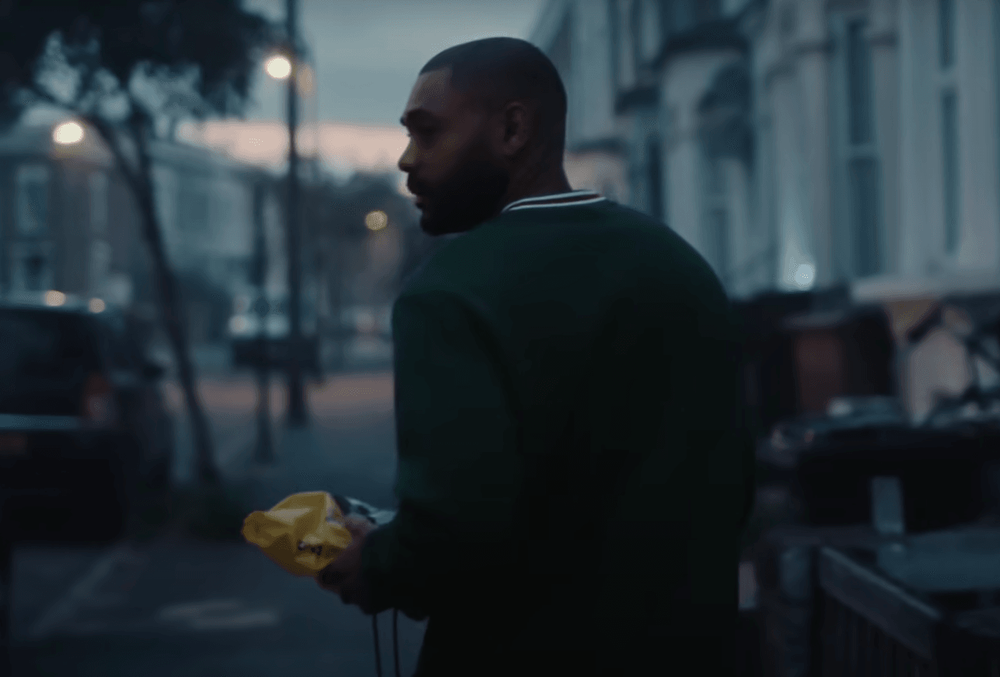
What makes JD partner with the talent it chooses?
Cross: A lot of thought goes into that process. JD Sports are very intentional with the talent they work with, because they always want to choose people who are very authentic to the culture that they serve, and are really highly regarded by the consumer – who is their core target. They always choose people who are really authentic to that culture, and who have been JD customers themselves. That’s a core part in the casting of it. It gives another string to their bow for how they’re trying to reach their audience. They’re constantly updating their talent, and it’s never just the biggest names. It’s also the people who are pushing culture forwards in their own spheres. We’ve worked with a lot of up-and-coming talent who reached different pockets of their audience.
What was the idea behind the teaser OOH campaign that this campaign launched with?
Duncan: This audience is hard to reach through media. We recognise that everything needs to be a moment for fame and so everything we were doing in the architecture of the comms was to see whether it could just be another moment of intrigue, conversation, like our WhatsApp groups. So a lot of this stuff may seem a little bit overthought or over-invested in, in the kind of totality of the campaign, but every part of this, we were just asking ourselves ‘how could it travel through WhatsApp groups and on school yards?’
Tobey Duncan, Uncommon Creative Studio
Tell us about the media plan.
Cross: This is a product of a really close collaboration with our media agency. There were a couple of examples of times where the media needed to work really closely with the creative concept, like the out of home. There are a couple of different threads that were integral to the media approach.
The first one was that we really wanted to show up where the audience are in the most authentic way possible. So across cities, putting artwork of talent in the places they grew up, and making sure that we really closely reached people through out of home and bus placements.
The second one was that we wanted to make the story of these young people iconic. Some of our media placements were purely in existence so that we could level this story up to a stage where people have never seen it represented in that way before. Cinema placements, for example, were a very core part of our media plan because we wanted to make sure people saw these young people in a place, and with a gravity, that they hadn’t previously been represented with.
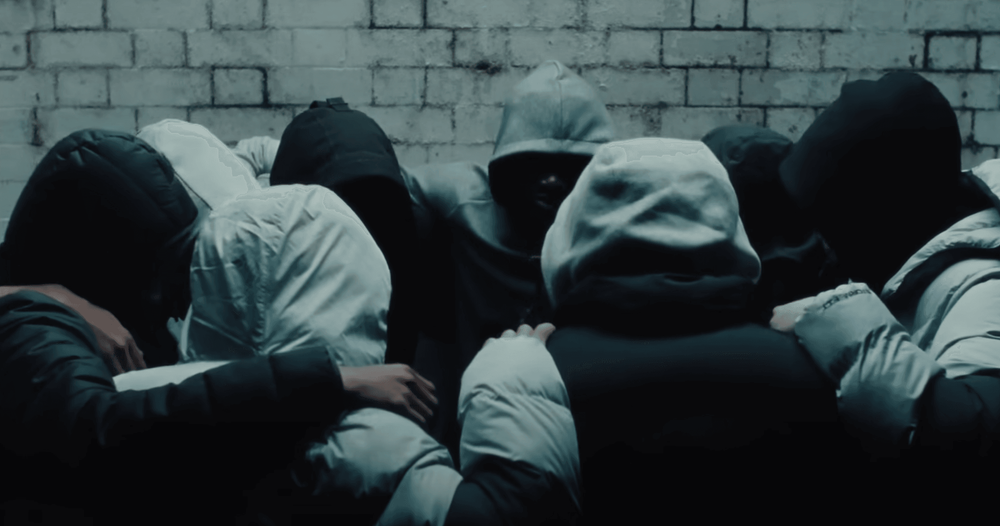
What were the biggest challenges you faced with this campaign?
Cross: These ads are really difficult to create because when the intention is authenticity, any deviation from a real representation of people will be instantly picked up by the audience who you’re trying to speak to, and trying to serve. You need to be so closely connected to the culture, not just from the offset but all the way throughout production through to launch. I’d say that was the biggest challenge, but one that we relished because we knew that was going to be a challenge baked into this approach.
What was your single greatest learning from this campaign?
Cross: I think this is reiterated stuff that we know is important but too often lose track of, and that’s that we were very struck by just how moved people have been by this sense of being seen and this sense of truth and accuracy, having their cultures represented in a really accurate and sensitive way. It reiterated the insight that led to this campaign, which is that there’s such a vacuum around positive representations of modern youth culture in all its diversity, in all its reality. It’s really drawn our attention to the fact that ads have become so disconnected from truth that actually, in our case, it was really radical to just present people exactly as they are. I think this is especially acute at Christmas when there’s so much artifice and so many extroverted representations of the Christmas period. For us, the biggest learning is even at times like Christmas, when there are lots of other brands doing ads, they’re really amping up the tradition and the songs and the jolliness, the importance of true insight and representing people accurately is what hits people in the heart.
Duncan: We’ve come to realise that the brands that really matter to people, don’t aspire to have a position in their category and be incrementally better than the competitors, they aspire to have a place in culture.
We did a lot of work to get to Forever Forward but by the end we just articulated something that inherently set up the business, which is that the whole JD organisation really believes in youth culture as a creative force in the world, and are spending all their time obsessed with pushing it forward. We just sought to bottle that. That was particularly powerful because so many people aren’t interested in that at this moment.
